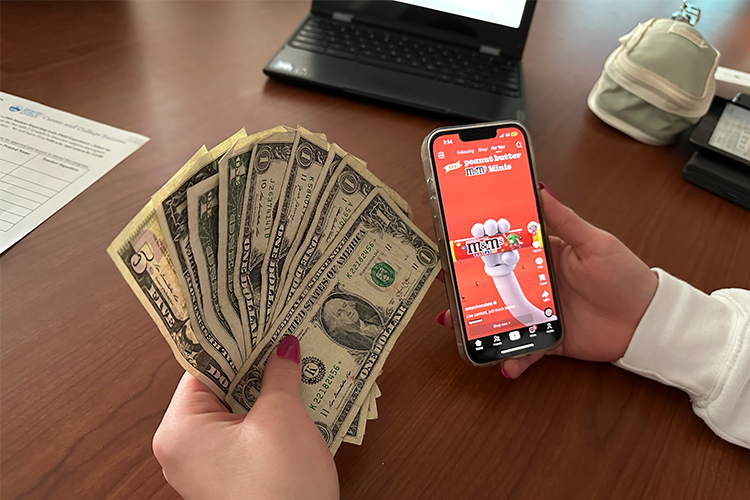
Too frequently social media users are bombarded with integrated advertisements that are individually tailored to gather information and the attention of the user. photo by Ravi Apte
In a time of increased integration of social media in daily life, users must come to reckon with the corporate world looking to capitalize off of their leisure time.
Over one third of the population in America admits to overspending to fuel their own adventures and keep up with what they see on social media. The everyday pressure to maintain status and keep up with the hype is a feeling that many of us have experienced. Through the rise of technology and social media in particular, companies have managed to capitalize upon the psychological proponents that fuel consumerism. When going on social media, you must go into the experience with a mindset that acknowledges the ways in which companies are preying off of your time scrolling on your phone.
Take a second to think about how much time a day you spend on the internet. How often do you interact with other companies? How often do you buy things because of these interactions? Every day while you scroll through social media, companies capitalize off of the many ways of online advertising that convince you to buy; herd mentality, public influencer sponsorships, and regular promotions are just a few of the many avenues that companies capitalize upon. Instagram, Tiktok, and Facebook are just a few of the major social media platforms that have developed algorithms and methods to profit off of human engagement and turn it into a transaction process. Most people don’t see scrolling through Instagram as a shopping experience. Instagram, however, views your scrolls as customer traffic. Almost all social media platforms offer their own shop where paying advertisers can sell and advertise their products, allowing the app to display these ads to the target audience. Without the ability to profit off of scrolling traffic, Instagram would not be free on the app store.
Furthermore, social media provides a platform for pressures from society to persuade you into purchasing. Every day as you scroll through your feed you interact with and find new products that other people are using and posting. According to Forbes, studies have shown that 81% of consumers’ buying decisions are influenced by their friends’ posts on social media. Additionally, 78% of consumers state their purchases are influenced by posts on social media pages of their favorite brands. This goes to show the psychology behind and the true results of these targeted marketing strategies. They are prevalent because they work so well, and for pennies on the dime in the world of marketing, companies are able to propel their products and services.
Moreover, consumers utilize technology in order to research products that they are interested in purchasing. Data from the Global World Index states that 54% of social media users research products via social media. Through the gradual integration of shops and stores, social media apps are coming to the forefront of retail. Think back to all the times you have ordered something online – has it always met your expectations? Just recently I ordered a football that was customized with my name engraved into the leather. The listing, which I found on Instagram, stated that it was a full sized football that you could throw and play with. After waiting around two months for the football to come in, it arrived, and to my surprise it was a mini football for decoration. These moments of letdown are common with online ordered items; long delivery times and inaccurate item representation are amongst the largest of problems when it comes to shopping via social media. Product honesty is a rare quality of sellers in the world of cheaply built consumer oriented products. In order to find a good product it requires research, and even if you have found a brand that you trust or received your order, it may be impossible to feel confident in your purchases.